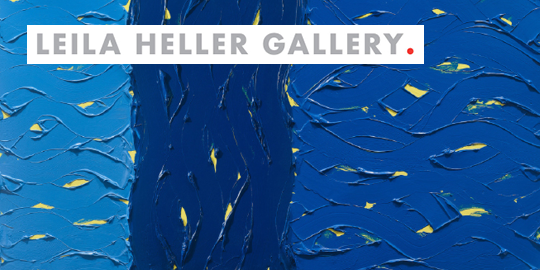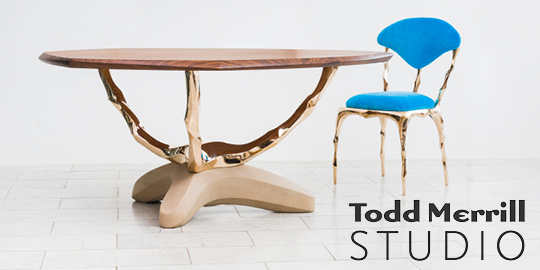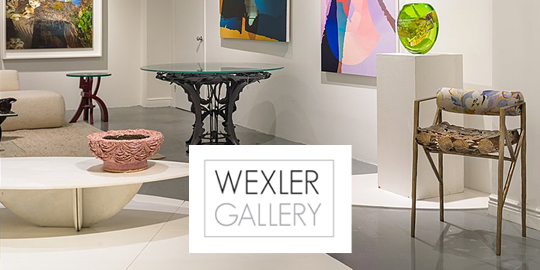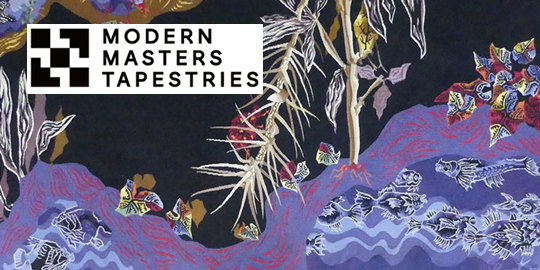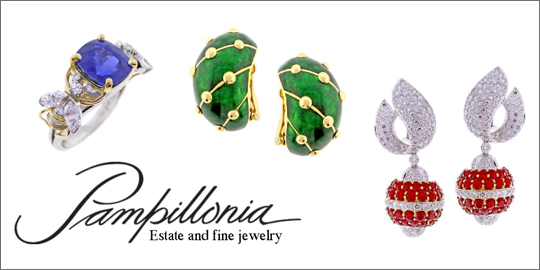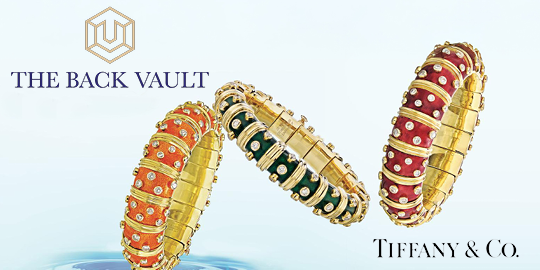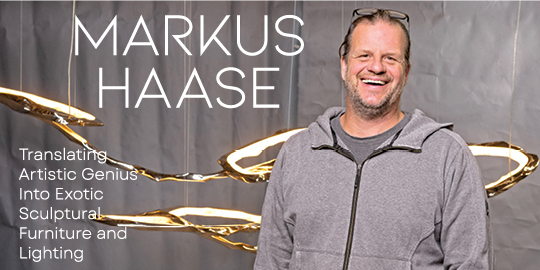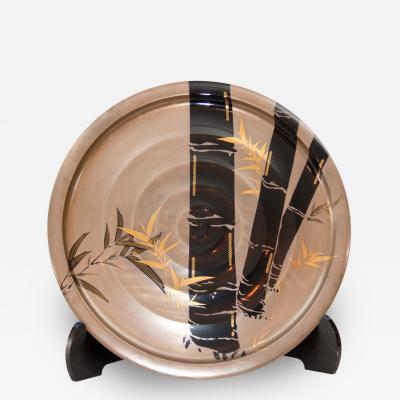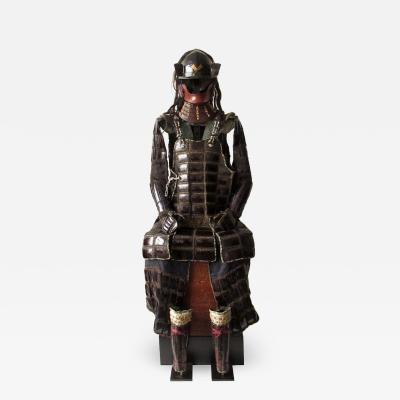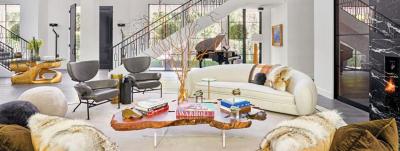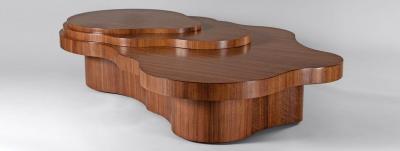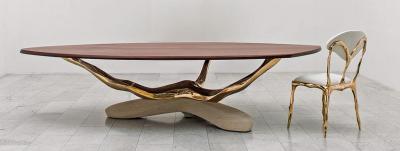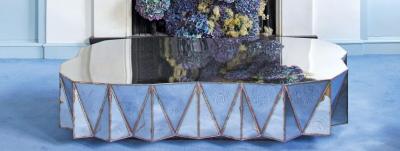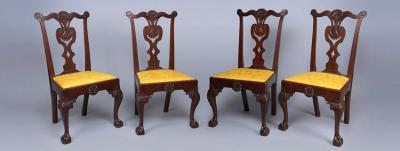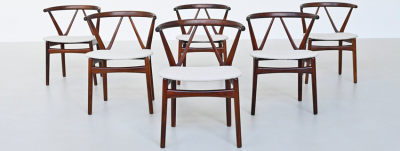Inspired Design: Asian Decorative Arts and Their Adaptations
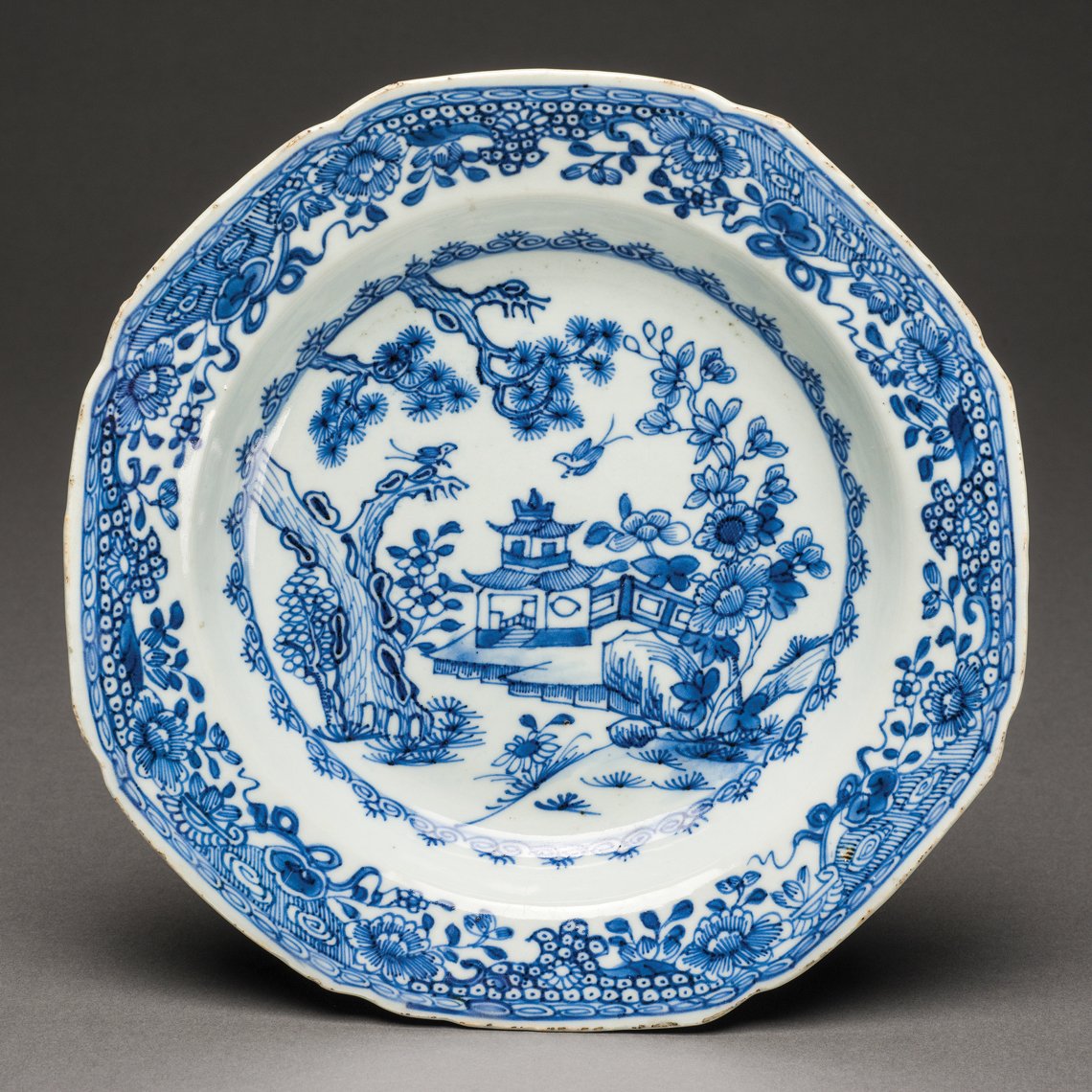 | |
Fig. 1: Soup plate, China, ca. 1760. Hard paste porcelain with underglaze cobalt painted enamel. John W. and Christiana G.P. Batdorf Fund (2001.33). |
In the seventeenth century, luxury goods imported from Asia captivated the collective imagination of the West. Enterprising artisans and craftspeople in England, Europe, and America saw opportunity in the continuing demand for such luxury goods as lacquerwares, porcelains, and textiles. Their ensuing, more affordable iterations created a fascinating and stylistically confusing hybrid of aesthetics applied to Western-made goods.
Such efforts by Western artisans to imitate various Eastern cultures ignored regional differences among peoples who inhabited diverse regions around the Indian and Pacific Oceans, as well as portions of the Mediterranean Sea. Motifs served as shorthand communication to evoke disparate, faraway lands, creating the style generically known as chinoiserie. More imaginative than accurate, this style incorporated pseudo-Chinese figures, pagodas, and fanciful landscapes.
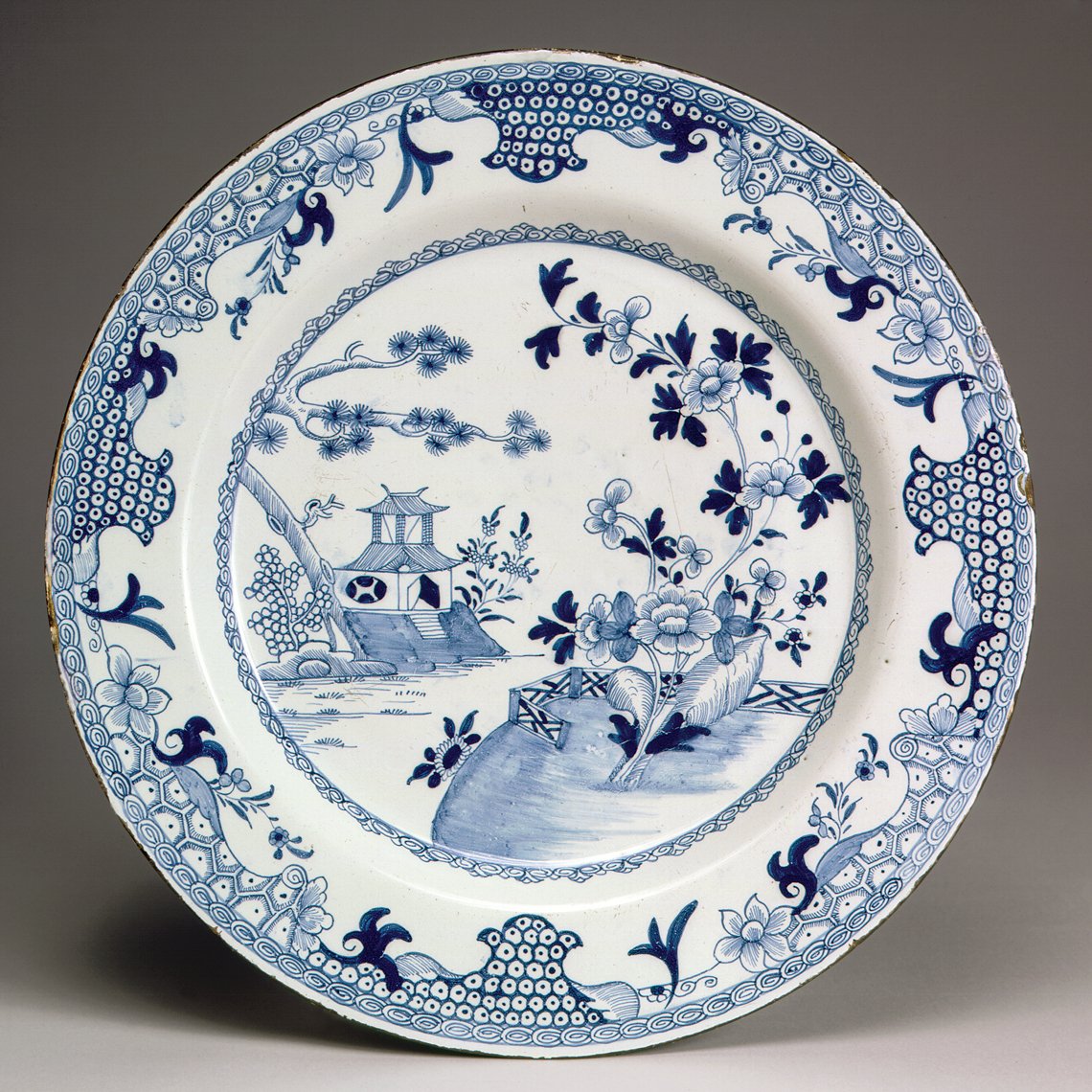 | |
Fig. 2: Dish, Dublin, Ireland, 1760–1770. Tin-glazed earthenware (delftware) painted in cobalt blue. With an underlined “9” on reverse (1379). |
Using Historic Deerfield’s extensive collection of decorative arts and library holdings from the seventeenth, eighteenth, and nineteenth centuries, the exhibition Inspired Design: Asian Decorative Arts and Their Adaptations explores the creative, cultural, and aesthetic principles surrounding goods inspired by, or made in imitation of, Asian decorative arts.
Three organizing narratives interpret Historic Deerfield’s selection of decorative arts within the time and place of their original use. “Creation and Process” compares the production techniques of Asian export art with European copies. For Western craftspeople, reproducing the exact techniques of their Eastern counterparts proved challenging. Often the raw materials, skill sets, and manufacturing techniques of the latter were not viable options for Westerners. Finding creative solutions that resembled the aesthetics of Asian products and design resulted in simplified versions produced in greater numbers to meet the demands of a growing middle class.
The museum’s vast ceramics collection is one of the best mediums through which to explore production processes. The popularity of blue and white decoration on Chinese porcelain inspired entrepreneurial Europeans to imitate the designs on less expensive ceramic bodies such as tin-glazed earthenware (Figs. 1, 2). Other means of reducing costs were to print rather than paint designs using transfer-printing. Printed designs pressed onto ceramics required a less skilled and less expensive labor force, thus making these wares even more affordable for consumers.
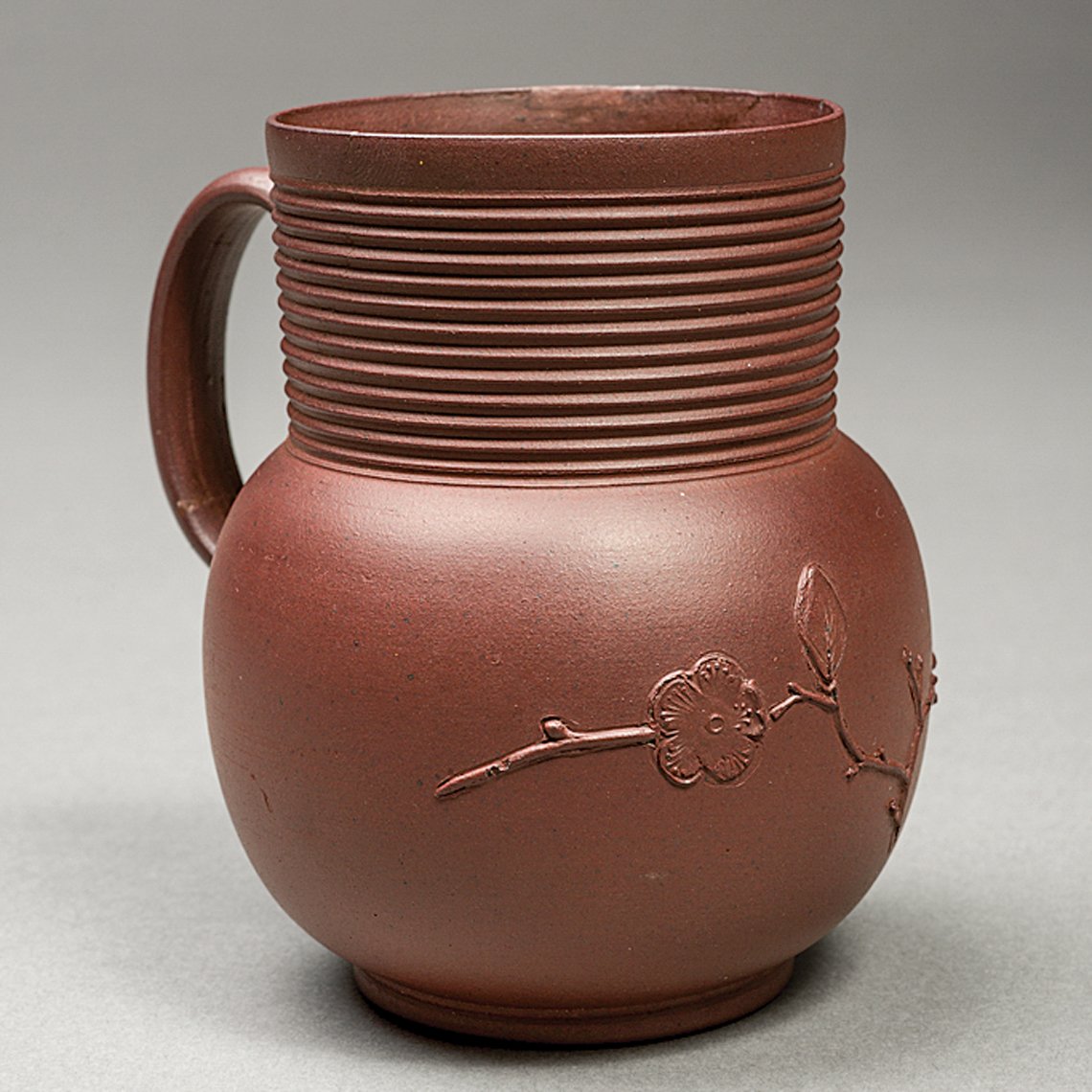 | |
Fig. 3: Mug, David (b.1656) and John Phillip Elers (b.1664), probably Bradwell Wood, Staffordshire, England, ca.1695. Red Stoneware. Museum Collections Fund (96.032). In addition to imitating red Chinese stoneware, the applied floral imagery is reminiscent of flowers seen on Asian decorative arts. |
Imported Chinese red stoneware teapots made at Yixing, the pottery capital of China, in Jiangsu province, were being imported into Europe by the mid-seventeenth century. Potters in Holland, England, and Germany began crafting their own imitations by the late seventeenth and early eighteenth centuries. Throughout the eighteenth century, in addition to teapots, Western craftsmen made other forms using “red china,” including tea canisters, cups, mugs, and jugs (Fig. 3).
Another exhibition narrative, “Motifs and Arrangements,” explores the rich and varied design sources of chinoiserie. The appeal of generic Asian designs centered on the link to the wider world they evoked. Architectural elements with curving roofs (suggesting pagodas), umbrellas, exotic birds, and exposed or prominent rocks and tree roots (sometimes incorporated onto floating islands), were among the more familiar design elements. When human figures appeared in these landscapes, they were usually dressed in draped (untailored), non-Western, and stereotyped clothing. These motifs were frequently combined in different scales, even on the same piece, often positioned in vertical or diagonal orientations that referenced the pictorial traditions of certain Asian societies. However, the designs always conformed to prevailing Western tastes.
Visual references in textiles were sometimes woven in rather than printed, as seen with a spectacular woman’s eighteenth-century gown (Fig. 4, 4a). In the 1730s, capitalizing on the vogue for Eastern cultures, Dutch designers in Amsterdam and Haarlem began creating sumptuous drawloom-woven silk patterns filled with improbable scenes echoing faraway lands and conjuring exotic journeys. Weavers wove reflective, shimmering, and colorful silk in a wider selvage width than typical European-woven silks to imitate those produced in China.
 | 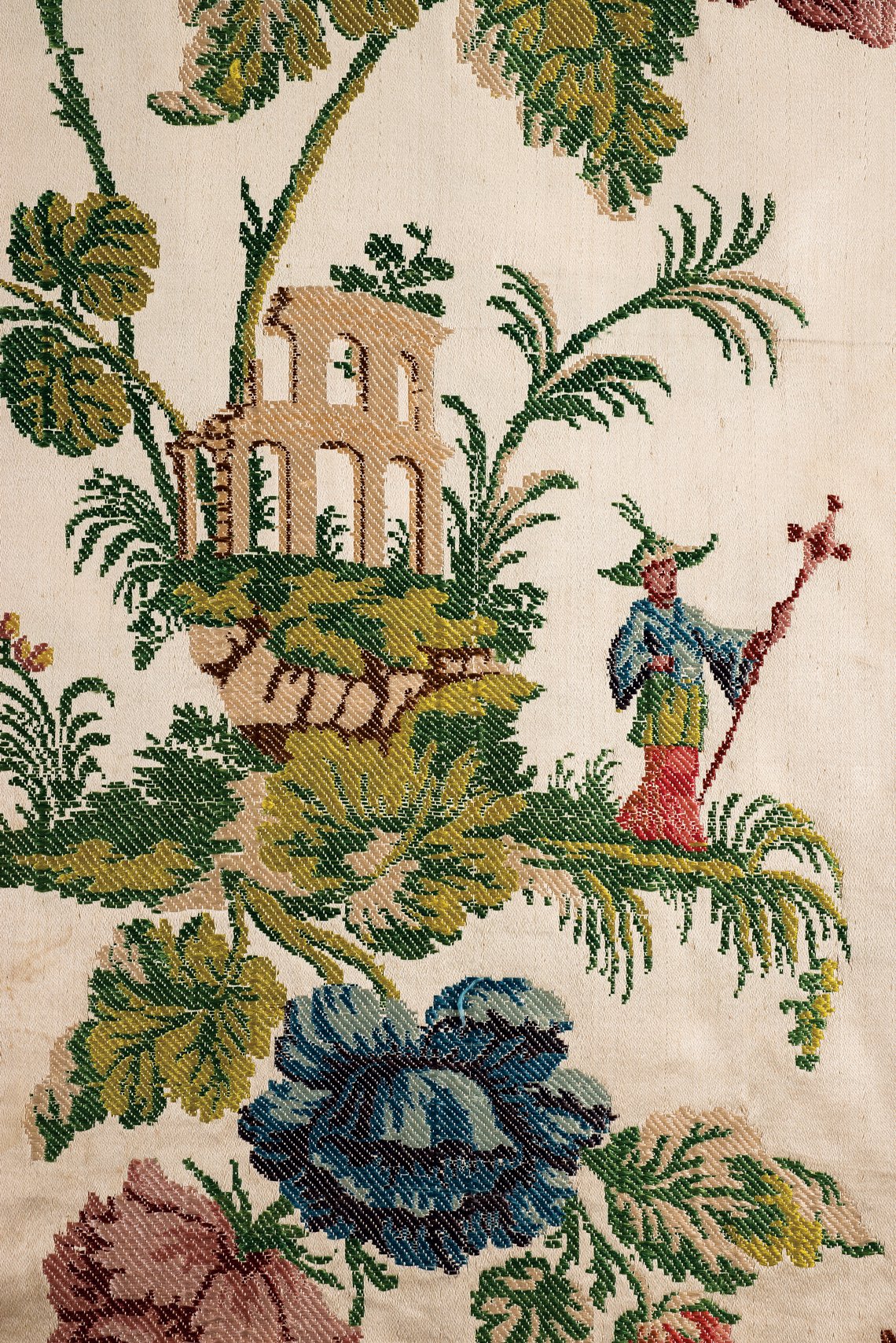 | |
left — Fig. 4: Gown (robe à la française). Textile: possibly Amsterdam; garment: England, ca. 1735–1740; altered ca. 1780. Polychrome, supplementary weft-patterned satin; off-white plain-weave silk (taffeta) lining; off-white plain-weave linen bodice lining (F.660). right — Fig. 4a: Detail of figure 4. | ||
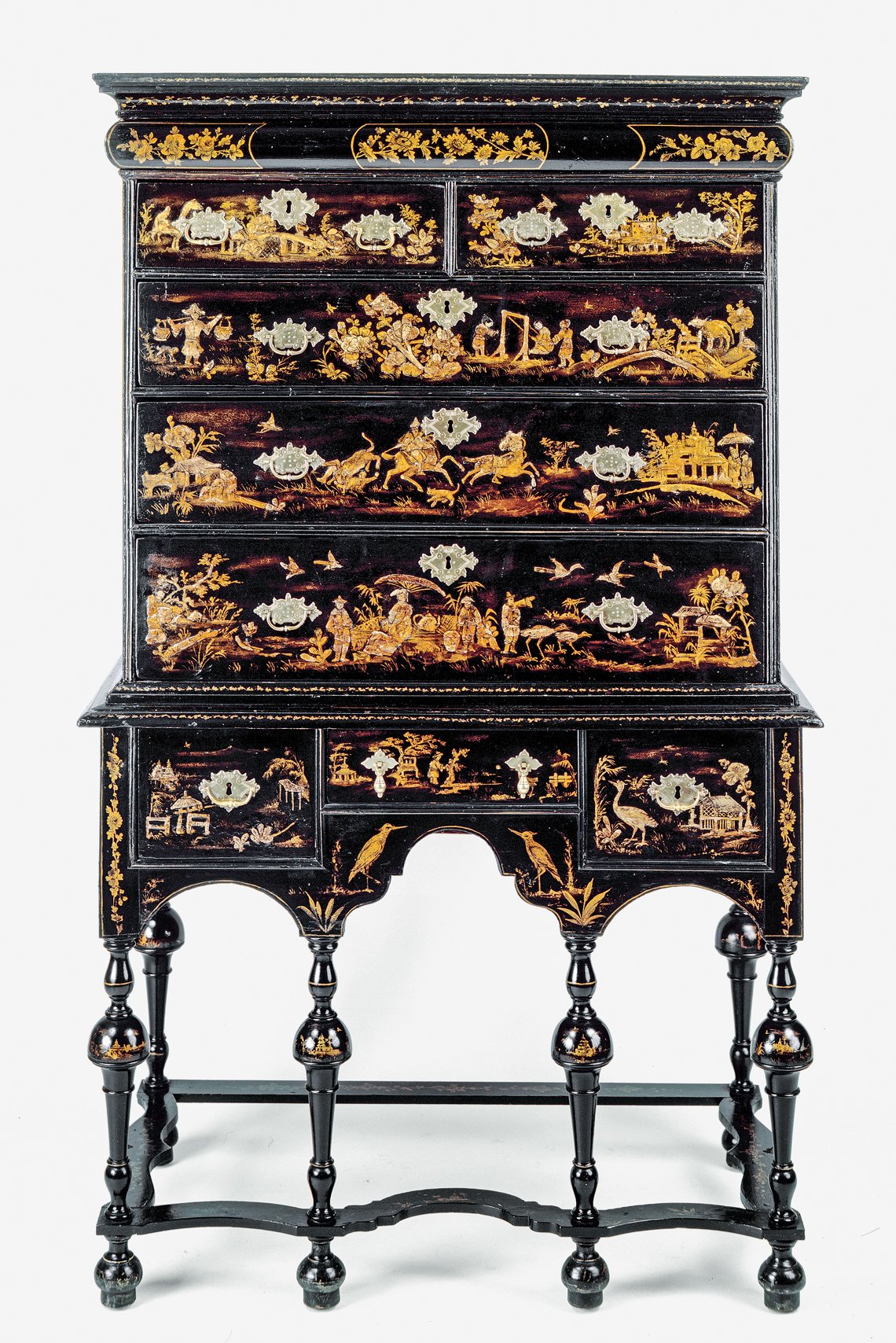 | 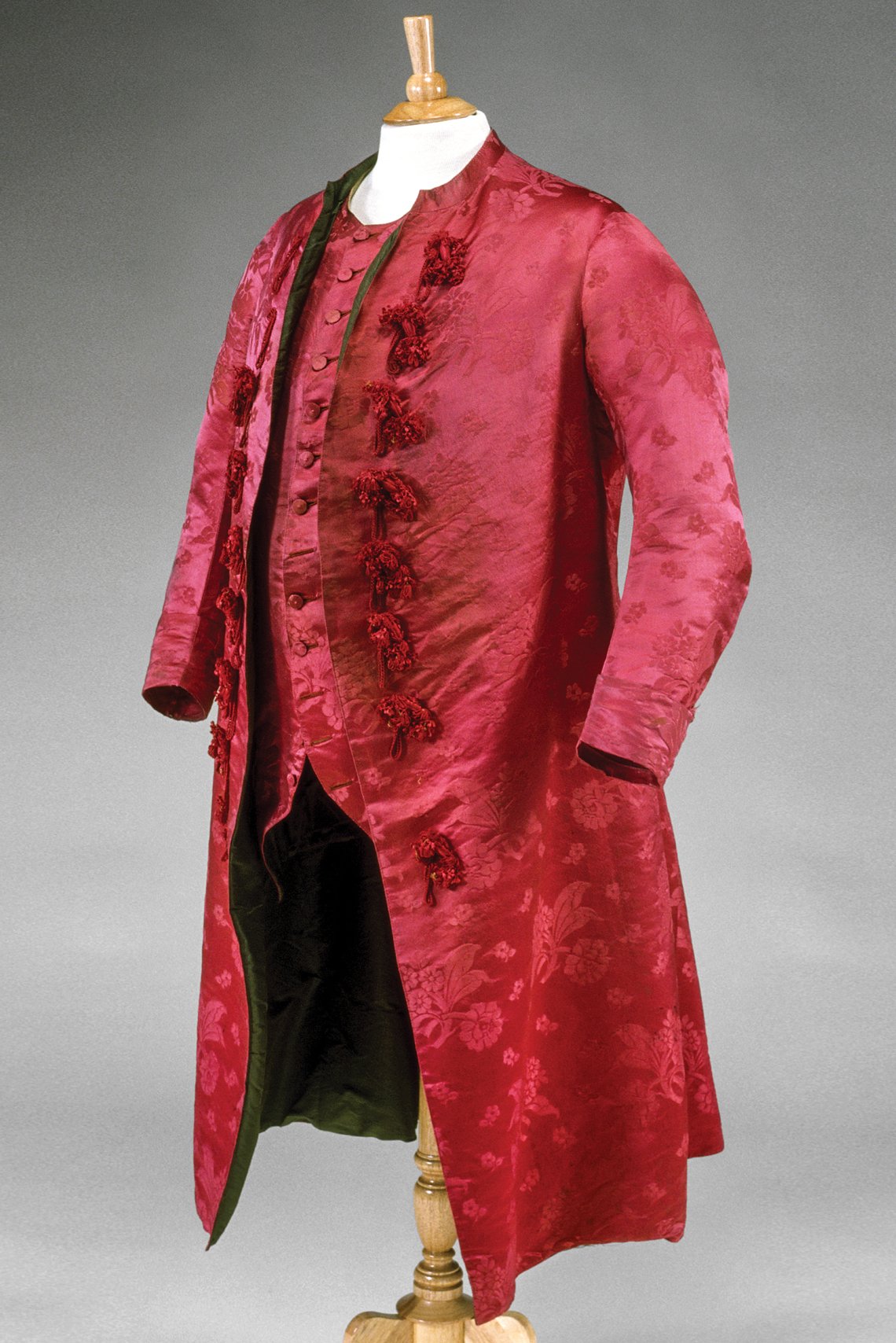 | |
| left — Fig. 5: High chest, attributed to Charles Warham (1701–1779), Boston, Mass., 1724–1733. Red maple, white pine, gesso, paint, gilding, brass (56.152). right — Fig. 6: Banyan, Spitalfields, England, ca. 1775. Red damask-weave silk; dark green twill-weave silk lining; off-white twill-weave wool lining; off-white plain weave wool (flannel) interfacing. Mr. and Mrs. Hugh B. Vanderbilt Fund for Curatorial Acquisitions (2001.10.1). | ||
Ideas for these motifs came from a variety of sources. John Stalker and George Parker’s Treatise on Japaning [sic] and Varnishing (1688), provided inspiration for a skilled pattern artist to create an imagined Asia filtered through a European lens. As the work’s title suggests, this design source also informed the creation of imitation lacquerware, or “japanning,” a process that involved the application of numerous layers of resin-based varnish alternately heated and dried between coats. First brought back by Dutch and Portuguese traders in the seventeenth century, Westerners developed a taste for Japanese lacquer, incorporating it onto portable items such as boxes and looking glasses as well as larger furniture forms (Fig. 5).
The final narrative of the show, “Form and Fashion,” looks at the interplay between traditional Western forms of clothing and household objects decorated in ways that suggest a generic East. Eastern influences on traditional Western clothing, including those from India in South Asia, were many. One such example is the adoption of dressing gowns as at-home wear. First introduced in the early seventeenth century by Dutch traders returning from Japan, more fitted, Indian-inspired versions known as banyans gained popularity in England and its American colonies by the eighteenth century. The vibrant red damask example seen in figure 6 is cut like a fashionable man’s suit from the period—complete with false waistcoat front. Despite the novel garment form, the fabric (woven in Spitalfields, England’s center of silk weaving) places this garment firmly in the lexicon of Western fashion.
 |
Featuring more than thirty objects. Inspired Design: Asian Decorative Arts and Their Adaptations is on view through February 9, 2020. It is on display in two locations within the Flynt Center of Early New England Life: the lobby and the Helen Geier Flynt Textile Gallery. The show’s themes continue in two of Historic Deerfield’s historic houses: the Stebbins and Wells-Thorn houses. For information call 413.775.7214 or visit www.historic-deerfield.org/exhibitions.
David E. (Ned) Lazaro is curator of textiles, Historic Deerfield, Deerfield, Massachusetts, and curator of Inspired Design: Asian Decorative Arts and Their Adaptations, on view through February 2020.
All photography by Penny Leveritt.
This article was originally published in the Autumn 2019 issue of Antiques & Fine Art magazine, a fully digitized version of which is available at www.afamag.com. AFA is affiliated with Incollect.com.


